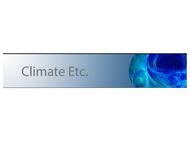Highlighted Article: Crossing (or not) the 1.5 and 2.0C thresholds
- Posted On:
- Feb 12, 2022 at 7:00 AM
- Category
- Climate Change
From: Climate Etc.
By: Judith Curry
Date: January 23, 2022
Crossing (or not) the 1.5 and 2.0C thresholds
“The first rule of climate chess is this. The board is bigger than we think, and includes more than fossil fuels.” – Jon Foley
The strategy to limit global warming is tied directly to limiting the amount of CO2 emitted into the atmosphere. Emissions targets are a centerpiece of the UNFCCC Paris Agreement. The goal of the emissions targets is to limit global warming to well below 2, preferably 1.5 degrees Centigrade, compared to pre-industrial levels (typically the baseline period 1851-1900). For reference, the climate has warmed in 2020 by about 1.2oC
Using the medium emissions scenario (SSP2-4.5), the IPCC AR6 constrained global mean temperature projections indicate that there is a 50% chance that the 1.5oC threshold would be crossed around 2030 and the 2oC threshold would be crossed around 2052. There is uncertainty in the year for which the thresholds would be crossed (2026-2042 for the 1.5oC threshold and 2038-2072 for the 2oC threshold), mostly owing to the range of climate sensitivity to CO2 among different models.
This post illustrates now natural climate variability could influence the global mean surface temperature change through 2050, and hence influence the time of crossing the 1.5 and 2.0oC thresholds. Specifically, alternative scenarios of volcanic eruptions, solar variability and internal climate variability are considered. The risk from not realistically accounting for natural climate variability is that critical possible future climate outcomes are being discounted, potentially causing maladaptation. Each of the scenarios presented here is arguably more plausible than the high emissions scenarios RCP8.5/SSP4-8.5 LINK. For additional reference, see also this previous blog post." (continue reading this post)
Crossing (or not) the 1.5 and 2.0C thresholds


